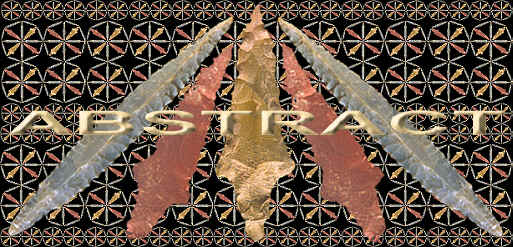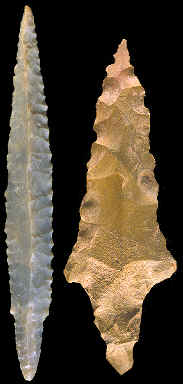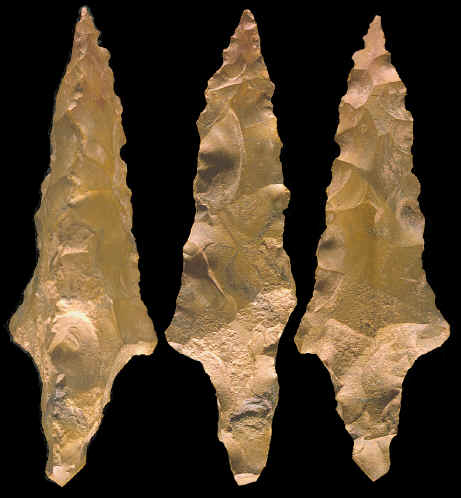|
||
|
||
|
"The unique character of the arrow points of Chiriqui (northern Panama) is already known to archaeologists. The most striking feature is the triangular section presented in nearly all cases."---1889, William H. Holmes.
THREE SIDED POINTS Stone Age cultures throughout the world have produced an endless variety of different styles of stone projectile points. Their quality of craftsmanship varies from simple edge trimmed flakes to points that were made by complex multi-stepped manufacturing techniques. The majority of all stone projectile points have two sides. They are either bifacially flaked (flaked on both sides), unifacial (flaked on one side only) or just simple edged trimmed flakes. The two varieties illustrated in this article are unique for their three sided form. |
||
|
The three sided points illustrated in this article were made from flakes struck from prepared cores. The Neolithic examples from northern Europe were made from flakes struck from highly developed cores. The three sided points from Panama seem to be struck from less developed cores. They tend to be much thicker and vary much more in width than the European forms. |
||
| CONTINUE ON TO PAGE TWO | ||
|
"REFERENCES"
1889,
Holmes, William H., "Ancient Art of the Province of Chiriqui
(Panama)," Vol. 14, Annual Report of the Bureau of Ethnology, p. 34. |
||



